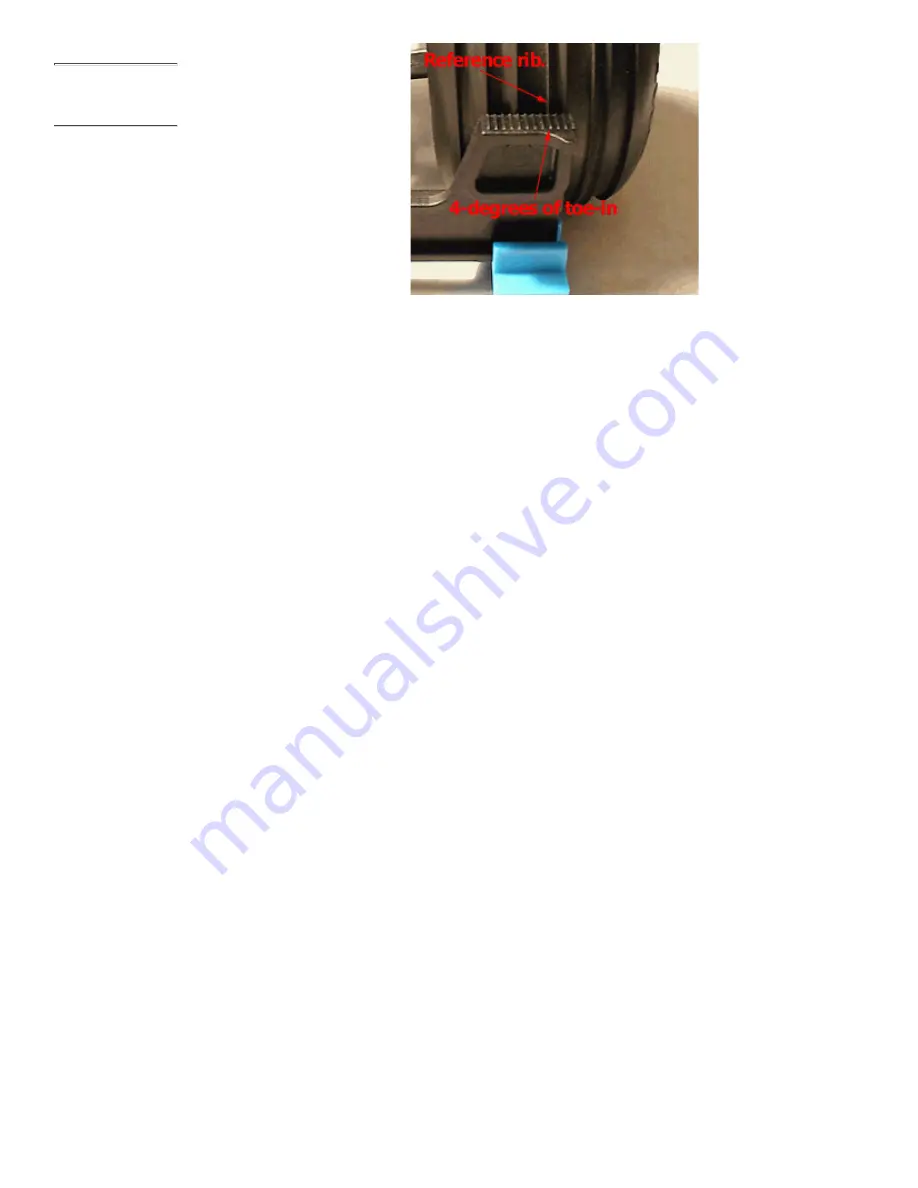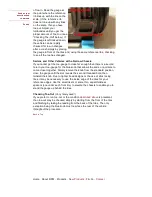
Send us your
questions and
comments
Search
of toe-in. Read the gauge at
the point where the reference
rib lines up with the line on the
scale. (If the reference rib
does not line up with any lines
on the scale, then you have
toe-out. Adjust your
turnbuckles until you get the
proper amount of Toe-In or see
"Checking Toe-Out" below.) If
the gauge is left locked down,
the vehicle can be rapidly
checked for toe-in changes
after a crash simply by placing
the gauge in front of the tires and, using the same reference ribs, checking
to see if the toe has changed.
Sedans and Other Vehicles with a Narrow Chassis
If you cannot get the toe-gauge to close far enough then there is a second
hole in your toe-gauge for the blue knob that allows the ends, or pointers, to
come closer together. Simply remove the knob from the standard position,
close the gauge until the slot reveals the second threaded hole, then
reinstall the knob. Due to tighter tread designs or the use of slick racing
tires, it may be necessary to use the inside edge of the tires for your
reference edges. Use the small risers or some thin, equal thickness
spacers (one under each front tire) to elevate the chassis to enable you to
stand the gauge up behind the tires.
Checking Toe-Out
(Very rarely used!)
If you prefer to run toe-out or the condition
described above
is prevalent,
then toe-out may be checked simply by starting from the front of the tires
and finishing by taking the reading from the back of the tires. The only
exception being the blue knob must now face the rear of the vehicle
throughout the procedure.
Back to Top
Home About RPM Products
New Products
F.A.Q.
Contact




















